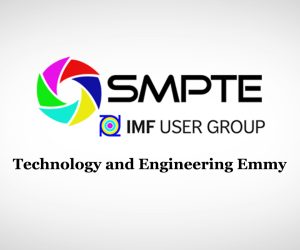
Pinball Whizzing: Spatial Theatre Audio
Immersive audio is making headway into musical theatre.
Musical theatre would seem ripe for the immersive audio picking. Productions are often holed up in cranky old theatres for months on end, where acoustics aren’t always great, and sound designers are always looking for an edge.
Astro Spatial Audio is a package that takes care of 3D mixing, some room enhancement and is starting to make inroads in Broadway as a PA-agnostic platform. Astro Spatial Audio (ASA) uses SpatialSound Wave (SSW) technology, developed by the Fraunhofer Institute for Digital Media Technology IDMT, and licensed to ASA.
MULTI-BAND AUDIO
Theatre sound designer Kai Harada won a Tony Award for Best Sound Design with a production called The Band’s Visit. The show, which was also nominated for Best Musical and a number of other gongs, follows a band’s trip to Israel for the opening of an Arab Cultural Centre, only to find out that they have boarded the wrong bus to the wrong town. Hijinks ensue.
The show marked the Broadway debut of Astro Spatial Audio (ASA), and Harada was keen to praise the effect the system had on the show’s sound design. “ASA allowed us to precisely place the instrument source as an audio object within a graphical interface, while it did all the calculations to make it sound correct. Changes to staging were easily accommodated,” he explained. “In addition, having used other acoustic enhancement systems on other shows, I was eager to try the ASA room enhancement to give the illusion that the theatre was a larger acoustic space for some key moments in the show.”
He added: “Without the functionality of the ASA system, the sound of The Band’s Visit would have remained two-dimensional. I’m extremely pleased with the results. I am eager to find another show that would lend itself to using Astro Spatial Audio.”
TOMMY: FEAST OF SENSES
Sitting in the audience of one of The Band’s Visit shows was audio designer Ken Travis who knew instantly he needed a Spatial Astro Audio system for a production he was working on: Pete Townshend’s rock opera, Tommy, in Denver.
“I was really blown by the use of the ASA system – and I wasn’t even sitting in a particularly good seat!” recalls Travis.
The core of the ASA solution, the SARA II Premium Rendering Engine is a 3U road- and rack-ready processor offering up to 128 MADI or 128 Dante configurable network pathways at 48kHz/24-bit resolution, and utilises extensive metadata attached to each audio object. The result is a precise calculation of that object’s position within virtual 3D space, processed in real-time up to 40 times per second for each individual object, as well as that object’s acoustic effect on the virtual space around it. The result for the engineer is a three-dimensional audio canvas on which to play. In this case the production is using Meyer Sound UPJ self-powered loudspeakers and a Digico SD10 console.
Travis allowed the system to stretch its legs on the showstopper, Pinball Wizard: “We treat the orchestra like it’s a pinball machine, so, for example, the guitars playing those massive power chords are mirrored by the flippers whacking the pinball around the room, while the Hammond B3 sounds like it’s coming from the lights on the machine,” says Travis. “In rehearsals I mapped out the whole song with the click track, then once we got into the theatre we linked up to timecode, hit ‘go’ and it worked flawlessly first time.” So much so, in fact, that “everyone started laughing, it was that good!”















RESPONSES